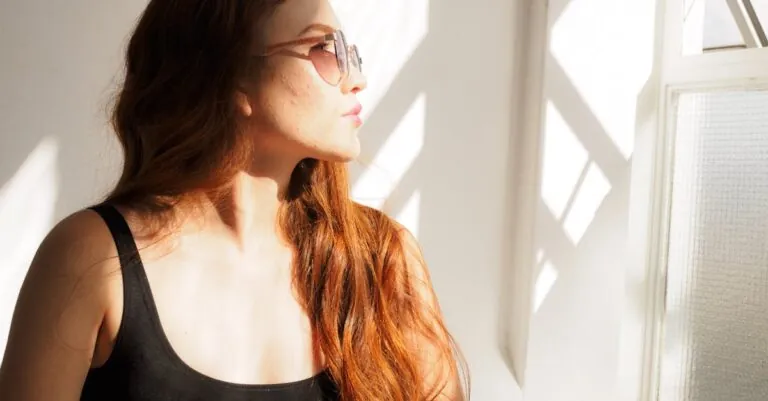Creating a room moodboard is like crafting a vision board for your space—only with fewer magazine clippings and more Pinterest scrolling. It’s the ultimate way to channel your inner designer and bring your dream room to life without the risk of paint splatters on your favorite shirt. Whether you’re going for cozy cottage vibes or sleek modern chic, moodboards help visualize your ideas and keep you on track.
Table of Contents
ToggleWhat Are Room Moodboards?
Room moodboards are visual tools designed to clarify and express interior design concepts. They compile images, colors, textures, and materials that resonate with a specific aesthetic or theme. This synthesis helps individuals articulate their vision for a space, allowing for greater creativity and coherence in design choices.
Creating a moodboard often involves collecting various elements from digital sources, such as Pinterest or interior design websites. Users arrange these components in a cohesive manner, highlighting key elements that inspire them. Color palettes, fabric swatches, and furniture styles all find a place on these boards, fostering a clear understanding of the intended vibe.
Moodboards serve several practical purposes. They act as a reference point during the planning phase, ensuring alignment with the desired outcome. Individuals often use moodboards to communicate their ideas with designers or contractors, minimizing misinterpretations. Establishing clarity from the outset improves collaboration and elevates the overall design process.
In addition, moodboards enable experimentation with different styles without commitment. This freedom encourages exploration, making it possible to visualize combinations that may not initially appear compatible. Understanding how varied elements complement one another brings a deeper awareness of design possibilities.
Ultimately, room moodboards play a crucial role in transforming ideas into tangible outcomes. They provide a structured way to gather inspiration while streamlining the decision-making process. By focusing on digital formats, moodboards eliminate the clutter that can accompany traditional methods of design planning.
Importance of Room Moodboards
Room moodboards play a vital role in the interior design process. They help articulate design visions and organize creative ideas effectively.
Visualizing Concepts
Moodboards visualize concepts clearly. By compiling images, color swatches, and materials, designers convey specific themes. They make it easier to see how different elements fit together. Creators can use platforms like Pinterest for inspiration, gathering visuals that resonate with the intended style. Articulating these concepts through moodboards enhances creativity and provides direction. Expressing ideas visually aids in maintaining focus on design goals. A well-structured moodboard captures the essence of the desired aesthetic, whether it’s rustic charm or sleek minimalism.
Simplifying Design Decisions
Simplifying design decisions becomes possible with moodboards. They serve as reference points throughout planning stages, reducing confusion down the line. Designers collaborate seamlessly by sharing moodboards with clients, ensuring everyone understands the vision. Testing various combinations of colors, textures, and styles becomes straightforward, fostering a confidence in choices. Moodboards minimize the potential for misinterpretation, making the design process smoother. Committing to one style or color becomes less daunting, allowing for exploration without pressure. By narrowing down options visually, moodboards streamline decision-making and enhance the overall design experience.
How to Create a Room Moodboard
Creating a room moodboard involves a few essential steps that make the process enjoyable and effective.
Gathering Inspiration
Start by exploring various sources for design inspiration. Pinterest, Instagram, and design blogs offer a wealth of ideas from interior designers and enthusiasts. Collect images that resonate with the desired theme, whether it’s minimalist, bohemian, or anything in between. Save everything that catches the eye, including furniture, decor, and color schemes. This initial collection helps establish a clear vision for the space and informs later decisions. Ensure diversity in the selection to enrich the creative process.
Choosing a Color Palette
Next, focus on selecting a cohesive color palette. Identify three to five main colors that complement each other and align with the intended aesthetic. Consider using tools like Adobe Color or Canva to visualize combinations and select shades that evoke the desired mood. Warm tones can create a welcoming atmosphere, while cool tones offer a serene feel. After choosing a palette, apply it to the moodboard, effectively conveying the overall vibe of the room.
Selecting Materials and Textures
Finally, think about materials and textures that enhance the chosen theme. Fabrics, wood finishes, metals, and other elements play pivotal roles in defining a space. Gather samples of materials and incorporate them into the moodboard. Consider how each texture interacts with the color palette and influences the overall design. Combining various textures adds depth and interest, helping to establish a tactile experience that aligns with the visual concept.
Tips for Using Room Moodboards Effectively
Using room moodboards enhances the design process by refining concepts and visualizing ideas. Here are some effective strategies to maximize their impact.
Collaborating with Others
Collaboration promotes creativity and diverse perspectives. Sharing moodboards with family, friends, or designers encourages feedback and new ideas. Scheduling regular check-ins helps ensure alignment on design visions. Inviting collaborators to contribute images fosters a sense of ownership and investment in the creative process. Incorporating varied insights leads to more well-rounded concepts, blending different styles and preferences for a cohesive outcome.
Updating Moodboards as Trends Change
Incorporation of current trends keeps room moodboards fresh and relevant. Regular updates allow individuals to reflect evolving tastes and preferences. Tracking popular design elements helps identify what resonates with personal style. Replacing outdated images with inspiring examples breathing new life into the moodboard fosters excitement. Adapting to emerging trends ensures the design remains modern and engaging throughout the planning phase. Staying flexible eases the transition between themes, allowing for ongoing experimentation and creativity.
Room moodboards are essential tools for anyone looking to bring their interior design visions to life. By visually compiling elements that resonate with a specific theme, individuals can clarify their ideas and streamline the decision-making process. This not only enhances creativity but also fosters effective communication with designers and collaborators.
As trends evolve and personal tastes shift, updating moodboards becomes crucial for maintaining a fresh perspective. Embracing the flexibility of moodboards encourages experimentation and exploration, making the design journey both enjoyable and rewarding. Ultimately, moodboards empower individuals to create spaces that truly reflect their unique aesthetic and lifestyle.






